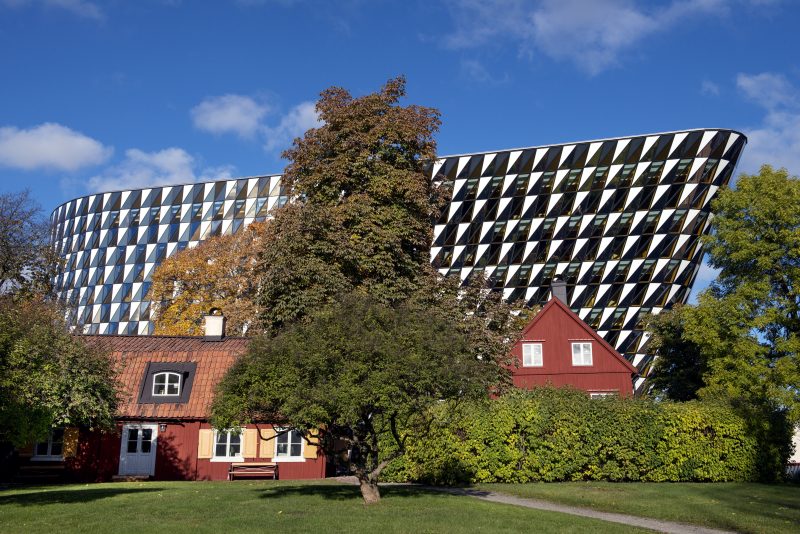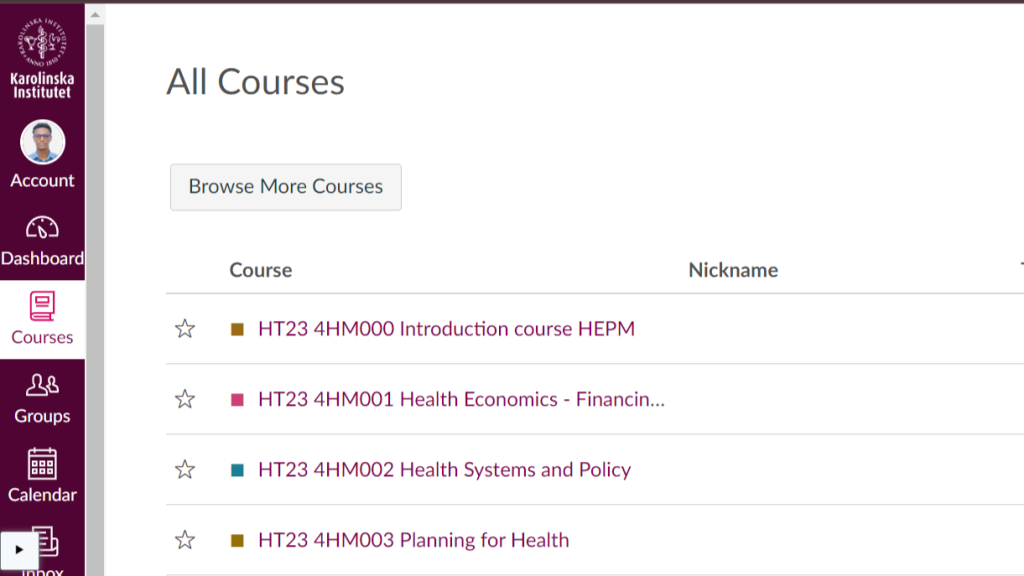
My first semester at KI: Course overview and reflection
As we say goodbye to our first semester at KI, let’s take a look at the courses we completed. I’m here to tell you what really happened: four courses, 30 credit hours, and four months of highs and lows. This is not your usual course review; think of it as your go-to guide, giving you a preview of what’s ahead and what to learn in your academic toolkit. So, grab a seat as we share the story of our first-semester adventure at Karolinska Institutet!
Navigating our course landscape
Our academic journey began with a lineup of four captivating courses, totaling 30 credit hours. In my previous reflections, we explored the initial two courses, and now, let’s reveal the final two pieces of this academic puzzle – Health systems and policy, and planning for health.
The Introduction course (7.5 credits) and Health Economics – Financing Health and Medical Care (10 credits) provided the foundation. But our program is not just about ticking course boxes; it’s a strategic blend of Health Economics, Policy, and Management. Each segment has its unique flavour, requiring an open mind and an eagerness to explore new chapters. After all, not everyone starts with an economic policy or management background. So, the first semester invites us to walk through these disciplines in an organised rhythm.
We started with the basics in the introduction and then dived into the details of health economics. Next, we unravelled the complex web of health systems and policies. Finally, we put on our planning hats to navigate the landscape of healthcare strategy. Ready to review each course?

Course 3: Learning about health systems and policies (10 credit hours)
This was our third course, and it focused on health systems and policies. It was a long and challenging course, but it helped me learn a lot – it marked my transition into the nature of my master’s studies. We began by learning about the history and structure of health systems. We used the World Health Organization’s framework to understand the different components of health systems, such as governance, financing, service delivery, and health workforce.
This course was not easy; we had to meticulously review and read a lot of books and papers before each lecture. One of the best parts was our group project, where we studied health systems in different countries of our choice. We saw how different they were, even in the same country, like Nigeria, Canada, or Tamil Nadu in India.
The last part of the course was to write a long essay, 2000 words, about the human resource policy in the country we chose. It was hard, but it was also very useful. It made us think more and write better. We learned more about the next courses in this way!
The sweet finale – planning for health (2.5 credit hours)
Our final course was a short but rewarding week of learning about health planning. We had a workshop-style training where we shared ideas and insights with experienced professors and experts in the field, who had worked in health planning across various local and international organizations. The course had a similar structure as our previous ones, with group assignments, presentations, and a final 2000-word essay. We reviewed different plans, from Australia’s country plan to Ethiopia’s national and regional plan to UNHCR’s global strategy for public health. In this lively classroom setting, we examined case studies, identified problems and their effects, and created plans to solve the challenges we found. The course went by fast, leaving us wanting more time to enjoy the knowledge and discussions that we had.

The first semester had two sides. On one side, it was fun and engaging. We had group projects, lectures, and activities that made us happy and grow. On the other side, it was hard and challenging. We had a lot of work, readings, and exams. But these challenges were not too hard, and they made us learn more.
So, what is the takeaway? Be open-minded, ready to explore different settings. Write better because it will help you a lot. And get ready for the exciting course of Health Economics Policy and Management. It’s not just a course; it’s a ride!
And by the way, Semester Two started with no time to be sad – more adventures are coming!

Yohannes - Health Economics Policy and Management
Hi there! My name is Yohannes, and I come from Ethiopia, the Cradle of Humanity. I've always been curious and ambitious, and my journey to Karolinska Institutet is a testament to that. I studied medicine and developed a deep fascination with the intersection of healthcare, economics, policy-making, and management. This passion led me to KI. I look forward to learning more about healthcare economics and becoming a part of the vibrant international community at KI. In my free time, I enjoy writing and drawing, always exploring and trying new things.
-
Dr.
You are doing great,
I am learning a lot at you.
Keep shining! -
We are all so proud of you!e
-
Your blog has been a source of inspiration for me, and I am now determined to pursue my interest in the institute with dedication

5 comments